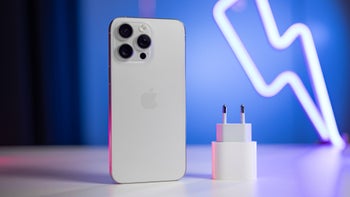iPhone 16 Pro Max vs Google Pixel 9 Pro XL: Expected differences
We may earn a commission if you make a purchase from the links on this page.

Intro
Google's ultimate and largest flagship phone this year is called the Pixel 9 Pro XL, and it will be one of the most fierce rivals to Apple's upcoming iPhone 16 Pro Max that's coming on September 9.
The Pixel 9 Pro XL was recently announced at the 2024 Made by Google event, and it boasts a new 42 MP selfie camera (which has performed mightily in our PhoneArena Camera Score), a much more capable Gemini Nano AI assistant, a fresh new design that is awfully similar to the iPhone's, and more.
The iPhone 16 Pro Max is yet to arrive, but we already know quite a bit about it, with some information pointing at new image sensors for its main and ultrawide cameras, both of which sound promising and will potentially introduce big jumps in image quality (especially for the ultra-wide).
The 9 Pro XL also has a new price tag, starting at $1099 for the base 128 GB storage variant, which is higher than its predecessor but still not as high as the rumored $1299 for the iPhone 16 Pro Max. Although, it's worth noting that the Pro Max will start at 256 GB.
iPhone 16 Pro Max vs Pixel 9 Pro XL differences:
| iPhone 16 Pro Max | Pixel 9 Pro XL |
|---|---|
| Apple A18 Pro chipset with much higher performance | Slower but still capable Tensor G4 chip |
| 256GB and 2TB base and maximum storage | 128GB and 1TB base and maximum storage |
| A focus integrating AI into Apple's device ecosystem | A more comprehensive application of AI thanks to Google's early start in this segment |
| A much more durable but still lightweight titanium frame | Light but significantly less durable aluminum frame |
| More scratch-resistant display thanks to Apple's Ceramic Shield glass | Equipped with strong Gorilla Glass Victus 2 glass, but not as durable |
| Smaller battery at 4,676 mAh capacity | More battery capacity at around 5,060mAh |
| Shoots higher resolution 24MP default photos with main and ultra-wide cameras | Defaults to 12MP with all cameras |
| Lower resolution selfie camera | Potentially much better image quality from the 42MP selfie camera |
| Supports 3K slow-motion video, but does not have 8K upscaling | Can only shoot 1080P slow motion video, but can upscale 4K footage into 8K resolution |
Table of Contents:
Design and Size
More alike then you might expect
Apple began making its Pro iPhone models with a titanium frame, which is also what we expect the iPhone 16 Pro Max's to have. In comparison, Google is yet to switch to a different type of material from aluminum. So, at the very least we expect the iPhone to be more resistant to damage, despite Google's claims that the new Pixel 9 Pro XL is twice as durable as before.
Size-wise, there shouldn't be too big of a difference between the two, with the iPhone 16 Pro Max estimated to be approximately 159.9 x 76.7 x 8.3 mm and the Pixel Pro 9 XL coming in at 162.8 x 76.6 x 8.5 mm.
Google refreshed the Pixel's design this year. Apart from its new camera module, the rest of the Pixel 9 Pro XL looks remarkably similar to Apple's iPhones from last year, so you would be forgiven if you confuse the two.
Size-wise, there shouldn't be too big of a difference between the two, with the iPhone 16 Pro Max estimated to be approximately 159.9 x 76.7 x 8.3 mm and the Pixel Pro 9 XL coming in at 162.8 x 76.6 x 8.5 mm.
Google refreshed the Pixel's design this year. Apart from its new camera module, the rest of the Pixel 9 Pro XL looks remarkably similar to Apple's iPhones from last year, so you would be forgiven if you confuse the two.
Suffice it to say, the flat frame and display, as well as the curved edges will be design elements that the 9 Pro XL and 16 Pro Max will share. The main differences will be the camera modules and the display cutouts for the selfie cameras.
Display Differences
The Pixel 9 Pro XL comes with a big 6.8-inch display that can reach a peak brightness of 3000 nits. It also has a resolution of 1344 x 2992 pixels and a 1-120Hz variable refresh rate.
We expect to see similar specs on the iPhone 16 Pro Max, but one area where it will beat the Pixel is its Ceramic Shield glass that is much more resistant to scratches.
Now that Google has reduced the bezels with the Pixel 9 Pro XL and made them uniform, it can finally rival the aesthetics of the iPhone's display. That said, Apple is said to decrease the bezels even more with the 16 Pro Max.
Another big thing for the Pixel 9 Pro XL is that it gets an ultrasonic fingerprint sensor embedded in its display. Google says the new sensor is 50% quicker compared to the optical fingerprint sensor on previous Pixel models. Of course, the iPhone will continue rocking FaceID as its biometric security system.
Performance and Software
Performance might not be the key metric anymore
The iPhone 16 Pro Max is said to come with Apple's A18 Pro chipset (3nm), which will include hardware specifically built for on-device AI. On the other hand, Google launched the Pixel 9 Pro XL with the Tensor G4 (4nm), which is also built for on-device AI.
Typically, Apple's chipsets perform significantly better compared to Google's when it comes to benchmark tests. This gap in performance doesn't usually show in real life though, at least not until you open up a graphically intensive task like image or video editing.
Typically, Apple's chipsets perform significantly better compared to Google's when it comes to benchmark tests. This gap in performance doesn't usually show in real life though, at least not until you open up a graphically intensive task like image or video editing.
The Pixel 9 Pro XL seemed to be somewhat slow at performing AI functions during the on-stage presentation at the Made by Google event, but that might improve with software updates.
For the iPhone, Apple is said to focus heavily on on-device AI with an aim on privacy and security, as well as processing speed. For cloud-based AI features, which are required for more complex tasks, the company will resort to its own private cloud infrastructure. But in instances (which are supposed to be rare) where Apple's AI cannot help, the phone will ask you if it can ask ChatGPT instead.
On Google's side, the Google Assistant on the Pixel 9 series is slowly but surely being replaced by Gemini, which is now multimodal and can understand information not only from text, but also from images, speech, and audio.
On Google's side, the Google Assistant on the Pixel 9 series is slowly but surely being replaced by Gemini, which is now multimodal and can understand information not only from text, but also from images, speech, and audio.
Google is also known for implementing AI on its phones in a fun, helpful, and creative way. The latest example of that, which comes with the Pro XL, is the Add Me feature. Add Me helps you combine two separate group photos to make sure everyone is in the image, using AI and augmented reality.
In terms of software support, Apple will probably match Google's 7 years of Android updates and security patches, as it has been offering long software support on iPhones for many years now.
Camera
New image sensors on both sides
iPhone 16 Pro Max expected cameras:
- Main (wide): 48MP
- Ultra-wide: 48MP (new)
- 5X telephoto: 12MP
- Front/selfie: 12MP
Pixel 9 Pro XL cameras:
- Main (wide): 50MP
- Ultra-wide: 48MP
- 5X telephoto: 48MP
- Front/selfie: 42MP (new)
The Pixel 9 Pro XL has the same camera system at the back that came with last year's Pixel 8 Pro. What's new is the selfie camera, which is now a 42MP and much more light sensitive than before. This should improve the image quality drastically, and we expect it to be visibly better than the 12MP selfie camera on the iPhone 16 Pro Max.
The iPhone 16 Pro Max is said to get a brand new sensor for the ultrawide camera. The new ultra-wide camera is rumored to jump to 48MP on the 16 Pro Max, matching the resolution of the Pixel 9 Pro XL's ultra-wide snapper.
However, the new ultra-wide sensor on the iPhone 16 Pro Max is expected to take 24MP default photos, just like with the main camera. That is why we expect the iPhone to take more detailed and sharp ultra-wide images compared to those from the Pixel 9 Pro XL, which defaults to 12MP.
When it comes to the telephoto cameras, however, the Pixel 9 Pro XL might blow the iPhone 16 Pro Max out of the water, thanks to its higher resolution and arguably better image processing when it comes to zoomed in shots.
As for video recording, the iPhone 16 Pro Max might come with support for 3K 120FPS video, which is essentially higher quality slow-motion footage—a long awaited feature that is missing on the Pixel.
Another exciting camera-related addition with the 16 Pro Max is a new capacitive capture button. This new button will be pressure sensitive and users will be able to half-press it to focus, for example, and then press it more firmly to take the shot. This capture button is also said to work with third-party applications, and have several other functions accesses via swiping your finger on it, like changing the Photographic Style or zooming in and out.
When it comes to AI camera features Apple is lagging behind quite a bit. Given the news that this year's iOS 18 update will be highly focused on artificial intelligence we expect that to change at least a little, with some of the iPhone 16 AI features to be related to its camera performance.
For example, Apple has showcased a new image editing feature that functions much like Google's Pixel Studio, but unlike on the Pixel, it smartly detects the object you want to remove and does not let your finger remove something else in the process.
Google already introduced quite a bit of camera AI functionality with last year's models, but the company has expanded on that solid foundation. Arguably the most noteworthy new AI camera-related feature on the Pixel 9 Pro XL is Add Me, which combines multiple group photos into one so that everyone can be in the shot.
Battery Life and Charging
Pixel finally gets MagSafe equivalent
Battery life has historically been pretty awesome on the iPhone Pro Max and larger Pixel models. We expect this to continue with the iPhone 16 Pro Max, while Google claims up to 20% improvement to battery life on the Pixel 9 Pro XL.
The Pixel boasts a large 5060 mAh battery, while we expect something considerably smaller on the iPhone 16 Pro Max, which should he somewhere between 4400-4700 mAh.
Neither the iPhone nor the Pixel have ever featured incredibly fast charging speeds, with representatives from both models usually aiming for a 50% charge in about 30 minutes of charging. However, the Pixel 9 Pro XL is stated to be able to charge from 1-70% in 30 minutes, so Apple has some catching up to do.
The one thing Apple had going for its iPhones since the introduction of the iPhone 12 series was MagSafe, and that is still the case. The Pixel 9 Pro XL does not have Qi2 wireless charging, which means it is not compatible with magnetic chargers and accessories.
Neither the iPhone nor the Pixel have ever featured incredibly fast charging speeds, with representatives from both models usually aiming for a 50% charge in about 30 minutes of charging. However, the Pixel 9 Pro XL is stated to be able to charge from 1-70% in 30 minutes, so Apple has some catching up to do.
Specs Comparison
Overall we are looking at rather similar specs here, besides the chipsets, which will differ quite a bit from each other in terms of processing power.
| iPhone 16 Pro Max | Pixel 9 Pro XL | |
|---|---|---|
| Size, weight | 159.9 x 76.7 x 8.3 mm, 221 g | 162.8 x 76.6 x 8.5 mm, 221 g |
| Screen | 6.8" OLED 1-120Hz ProMotion | 6.8" OLED 1-120Hz LTPO |
| Processor | Apple A18 Pro 3nm | Tensor G4 4nm |
| RAM, Storage | 8/256 GB 8/512 GB 8/1 TB 8/2 TB LPDDR5 | 16/128 GB 16/256 GB 16/512 GB 16/1 TB LPDDR5X |
| Cameras | 48 MP main 48 MP ultra 12 MP 5X zoom 12 MP front | 50 MP main 48 MP ultra 48 MP 5X zoom 42 MP front |
| Battery | 4,422 - 4,676 mAh | 5060 mAh |
| Charging | USB-C 40W wired 20W wireless with MagSafe | USB-C 37W wired 23W Qi |
For now, the most notable specs here are the potential 2TB of storage on the iPhone 16 Pro Max and the new A18 Pro and Tensor G4 chipsets. The other notable highlight are the 42 MP selfie camera on the Pixel and the 48 MP ultrawide on the iPhone.
Summary
It appears this year will an important one for camera upgrades for Apple's high-end Pro Max model, but as we saw also fo Google's Pixel 9 Pro XL. We can't wait to compare the two camera systems of these phones once the iPhone also comes out!
Besides the cameras, the most notable differentiating factors, and ultimately what would be the reason why you choose one instead of the other, is the way AI gets utilized and the user experience that comes along with the operating system you go for. Of course, that is unless you are walled in Apple's ecosystem, as that is a major transition stopper.
But Apple seems to be having some backlash after its announcement of iOS 18, while Android is becoming more and more powerful via Google's extensive experience in AI. Not to mention that the Pixel 9 Pro XL looks and (presumably) feels a lot like an iPhone now, so a transition might not be as weird to consumers as it used to be.
Apple will undoubtedly lean towards its strengths when it comes to the camera performance, especially in video recording, but we can also expect a creative and useful AI feature or two to be shown during the announcement.




![iPhone users on AT&T left without service after massive outage [UPDATED]](jpg/iphone-users-on-at-t-left-without-service-after-massive-outage-updated.jpg)








Things that are NOT allowed: